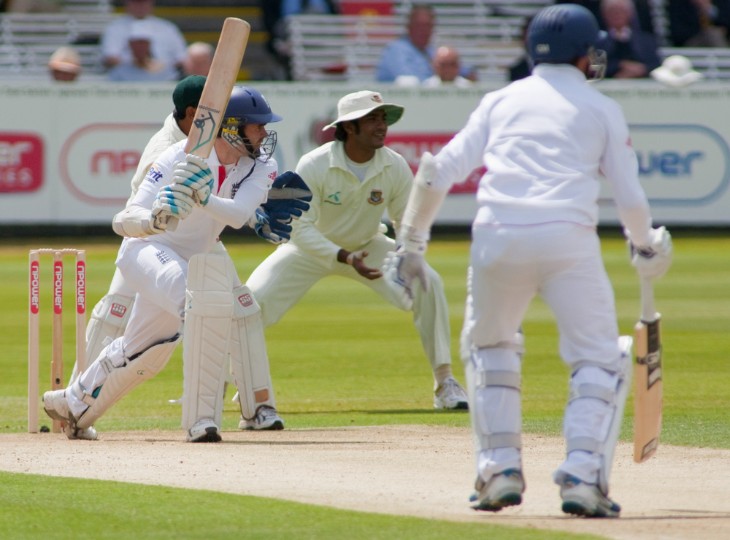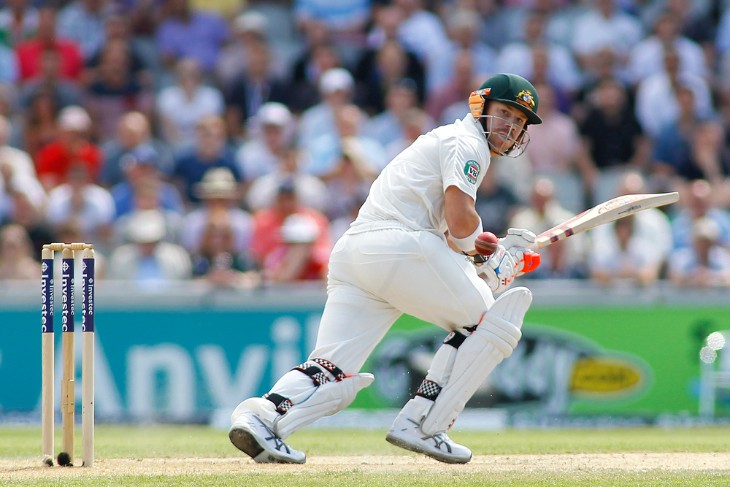- Analysing the Odds: How Bookmakers Set Prices for Test Matches
- Strategic Betting: Long-Term vs Short-Term Wagers in Test Cricket
- Player and Team Form: Critical Factors for Informed Betting
- Statistical Tools and Models for Predicting Test Match Results
- The Role of In-Play Betting in Test Match Cricket
- Conclusion
Test cricket is distinguished from other forms by its length and the depth of play it allows. A Test match is typically scheduled over five days, with each day consisting of three sessions of play. This duration offers teams the opportunity to construct a deep, strategic contest, often compared to a game of chess on a grand scale. The objective is simple in theory yet complex in execution: outscore the opponent twice within the allotted time, once each in two innings.
Scoring in Test matches is traditionally conservative compared to the one-day or Twenty20 formats. Players are afforded the time to build their innings, and a premium is placed on wicket preservation. A team's total score in an innings is the accumulation of runs scored by the batsmen, which can be achieved in a variety of ways, from running between the wickets to hitting boundaries.
Analysing the Odds: How Bookmakers Set Prices for Test Matches
When it comes to betting on Test matches, bookmakers employ a complex set of variables to set the odds. The starting point is the historical data which encompasses past performances, head-to-head records, and individual player statistics. This quantitative foundation provides a baseline, but odds setting is as much an art as a science, and bookmakers must also consider a multitude of other factors. These include current team form, player injuries, and even the psychological state of teams, which can have a subtle yet significant impact on performance.
Beyond these considerations, the conditions under which a Test is played can greatly influence the odds. The location of the match is critical; for instance, subcontinental pitches in India or Sri Lanka offer different challenges compared to the seam-friendly conditions in England or the pacey wickets in Australia. Weather forecasts, pitch reports, and even the toss decision can lead to fluctuations in odds minutes before the game begins. Savvy bettors keep a keen eye on these changes to find value bets, often requiring a deep understanding of the many intricacies of the sport.
Strategic Betting: Long-Term vs Short-Term Wagers in Test Cricket
Betting strategies in Test match cricket can broadly be categorized into long-term and short-term wagers. Long-term bets are placed on outcomes that are decided over the course of a series or even an entire season, such as the winner of a tournament or the top run-scorer and wicket-taker. These bets require a deep understanding of the teams' and players' long-term form and consistency, as well as an appreciation for how different conditions might affect their performances over time. The patience and research invested in such wagers can be substantial, but so too can the rewards.
Short-term wagers, on the other hand, focus on specific aspects within a single match or even a single day's play. Examples include betting on the team or player to score the most runs in a session, the outcome of the next ball or over, and how the first wicket will fall. These bets are more reactive to the immediate state of play and can be influenced by live action on the field. The volatility of short-term betting in Test cricket can be high, but it offers dynamic engagement with the match and the potential for quick returns.

Player and Team Form: Critical Factors for Informed Betting
Assessing the form of players and teams is indispensable when betting on Test cricket. A player's recent performance, including batting averages, bowling figures, and fitness levels, can provide valuable insights into their potential impact on a match. A batsman in good form is more likely to score runs, just as a bowler with a recent record of taking wickets is a threat to any opposition. This individual form must be weighed against the collective form of the team, which encompasses not just the sum of individual performances but also the team dynamics and morale.
Team form extends beyond mere statistics; it encompasses the strategic approach of the team as a whole. For example, a team that has a history of performing well under pressure or a reputation for remarkable comebacks might be a safer bet in a seemingly adverse situation. Conversely, teams that historically struggle in the final innings of a Test might warrant caution from bettors when odds appear favourable. A nuanced appreciation of both individual player form and team dynamics can provide the foresight required for placing more informed and strategic bets.
Statistical Tools and Models for Predicting Test Match Results
In the digital age, statistical tools and predictive models have become central to the betting landscape. These sophisticated algorithms can analyse vast datasets to forecast outcomes with a degree of precision that was previously unattainable. Models may consider player statistics, team rankings, historical outcomes, and even more granular data such as individual player matchups against certain types of bowling or batting. The use of these tools can give bettors an edge, offering a more objective basis for making decisions as opposed to relying solely on intuition or incomplete information.
However, the stochastic nature of cricket means that there is always an element of unpredictability, no matter how advanced the model. Factors such as a sudden injury, an unexpected captaincy decision, or a dramatic shift in weather conditions can all impact the outcome of a match and are difficult to quantify. While statistical models are powerful, they are most effective when used in conjunction with a bettor’s own knowledge and understanding of the game. The successful bettor thus balances the insights provided by statistical tools with their own expertise and the ever-present element of chance inherent in the sport of cricket.
The psychological factors at play in Test match betting are often as intricate as the game itself. Bettors need to be cognisant of their own biases and the psychological traps that can lead to poor decision-making. For instance, a phenomenon known as the 'gambler’s fallacy' may influence a bettor to expect a change in luck or outcomes based on previous events, which in reality have no bearing on future results. Emotional betting, spurred by loyalty to a team or player, can also cloud judgment and lead to wagers that do not align with the objective data.
Moreover, the mental fortitude of the players involved in a Test match can influence the betting odds. A team's psychological resilience, or lack thereof, in responding to the pressures of Test cricket is a significant variable. A squad known for its mental toughness may be a safer bet in a high-stakes scenario, while players with a history of thriving under pressure can offer value in live betting situations. Discerning bettors will factor in these psychological elements when placing their bets, often drawing on historical performances under similar conditions to guide their decisions.

The Role of In-Play Betting in Test Match Cricket
In-play or live betting has transformed the landscape of sports betting, and Test cricket is no exception. This form of betting allows wagers to be placed on events as they unfold, with odds that fluctuate in real-time based on the on-field action. In a Test match, this could mean betting on the outcome of the next delivery, the number of runs scored in an upcoming over, or the method of the next dismissal. The dynamism of in-play betting is particularly suited to Test cricket, where the pace of the game allows bettors the time to make informed decisions.
The strategy behind in-play betting in Test matches involves a keen observation of the match conditions and an understanding of the game's rhythms and momentum shifts. It requires bettors to be attentive and responsive to live events, such as a batsman reaching a state of dominance or a bowler finding a particularly troubling line and length. Successful in-play bettors are those who can read the game and anticipate its flow, making quick yet informed decisions. As such, in-play betting on Test cricket not only adds an element of excitement to the viewing experience but also offers the possibility of capitalising on the unfolding narrative of the match.
Responsible gambling is a cornerstone of a sustainable approach to betting on any sport, including Test cricket. It involves recognising the risks associated with betting and implementing strategies to mitigate them. Bettors are advised to set clear limits on their wagers and to only gamble with funds they can afford to lose. This is particularly pertinent in Test match betting, where the long duration of the game and the potential for fluctuating odds can entice bettors to chase losses or wager impulsively.
Another aspect of responsible gambling is understanding the concept of value in betting odds. It's not just about predicting the outcome but also about assessing whether the odds on offer provide good value based on the perceived probability of an event occurring. This requires discipline and an analytical approach to decision-making. Additionally, availing oneself of tools provided by many betting sites, such as deposit limits and self-exclusion options, can help maintain control over gambling habits, ensuring that betting remains a form of entertainment rather than a problematic behaviour.
Conclusion
As we look to the future of betting in Test match cricket, the trends point towards an increasingly sophisticated marketplace, with technology playing a central role. The rise of data analytics and machine learning models promises to provide bettors with ever more nuanced insights into the game, potentially revolutionising the way odds are calculated and bets are placed. Additionally, the ongoing legalisation and regulation of sports betting in various jurisdictions around the world could lead to a broader, more engaged audience for Test match betting.
For more information:


